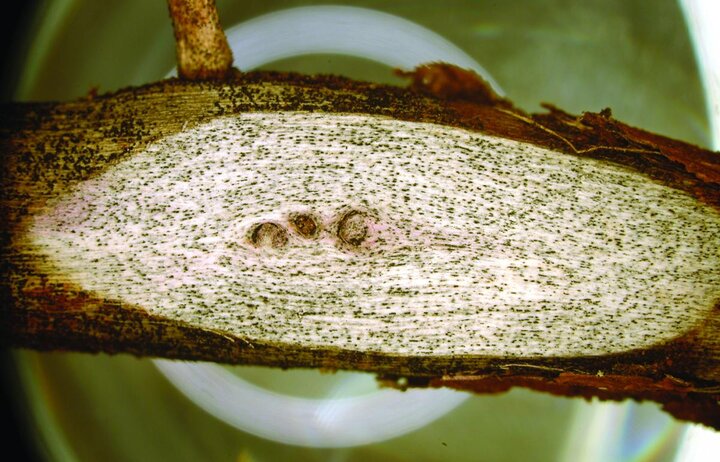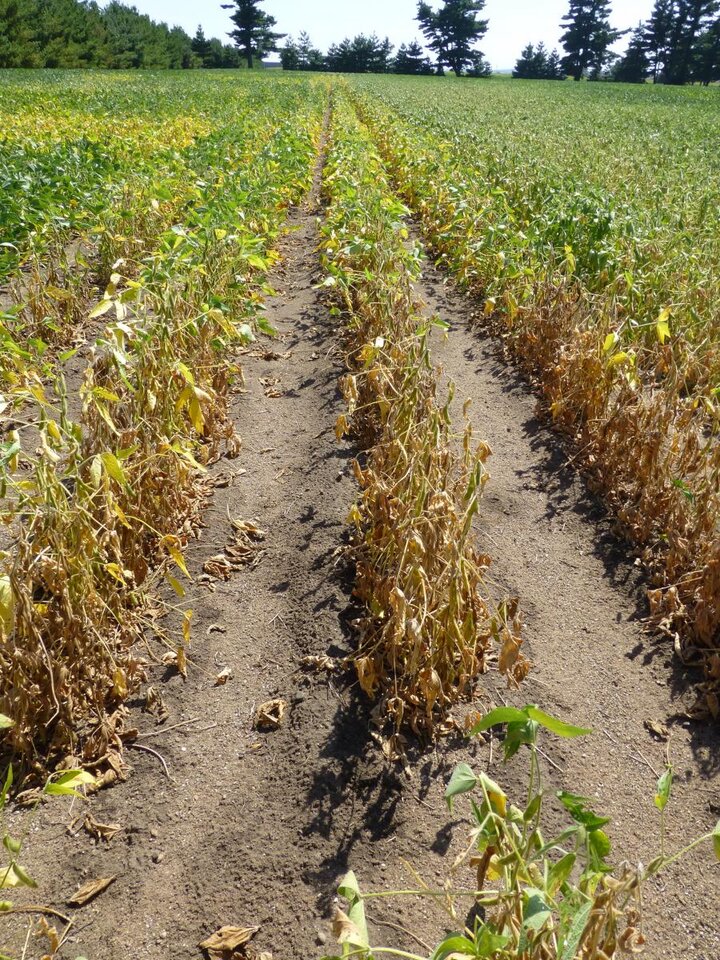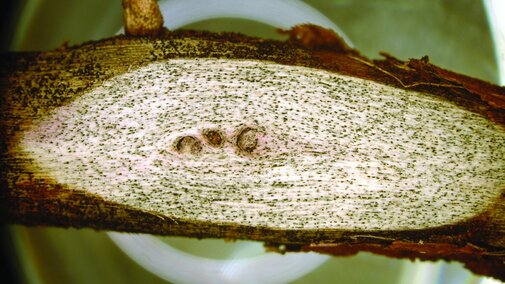Kiersten Wise, University of Kentucky
Daren Mueller, Iowa State University
Tom Allen, Mississippi State University
Loren Giesler, University of Nebraska-Lincoln
Information compiled and article written by: Jody Korthaus
The persistent hot weather this growing season may be conducive to the development of charcoal rot disease in soybean. Farmers, agronomists, crop consultants and specialists are encouraged to scout for this disease now. Although charcoal rot is most severe in years and areas experiencing hot, dry weather, this disease can also cause losses when ample moisture is present, making it a hidden threat to yield.
“The fungus generally infects soybean seedlings early in the growing season, yet foliar symptoms may not appear until mid-season or later during reproductive growth stages,” said Kiersten Wise, associate professor and extension grain crops specialist at University of Kentucky. “Symptoms generally develop as a result of an external stress, such as drought or high temperatures and are easy to confuse with several other diseases and disorders, including soybean cyst nematode injury, early senescence, and drought stress.”
The causal fungus spreads from the roots to the stem, filling tissues with small, dark, round fungal structures called microsclerotia (Figure 1). These structures clog vascular tissue, causing wilting, yellowing, and stunting of the plant, which is more apparent in drought-stressed areas (Figure 2).
“It is important to determine if charcoal rot is present because microsclerotia can survive in soil for several years and the fungus can infect a number of rotation crops, including corn, cotton and grain sorghum, which limits the effectiveness of tillage and rotation for managing the disease,” said Daren Mueller, associate professor and extension plant pathology specialist at Iowa State University.

To determine if charcoal rot is present, remove symptomatic plants from the soil profile and either split the lower stems or gently remove the outer bark of the plant to look for microsclerotia.
“Producers with confirmed fields containing charcoal rot-affected plants should work with seed dealers to select less susceptible varieties and avoid planting at high populations to reduce competition for water among plants,” said Tom Allen, extension plant pathology specialist at Mississippi State University. “Genetic resistance is limited, but may be available.”
Foliar fungicides are ineffective at preventing or reducing disease development. Irrigating soybeans can help reduce water stress, but may not prevent charcoal rot development in fields with a history of the disease or in situations where irrigation is poorly managed.
Research Efforts
The United Soybean Board and North Central Soybean Research Program have funded research that helps us better understand charcoal rot. Through these projects, resources have been developed that can be used by soybean farmers and other agriculture allied personnel to help diagnose and manage charcoal rot.
In general, effective management begins by properly diagnosing the disease. However, when observed in field situations, in-season management practices are not available and an integrated management approach should be used for subsequent seasons. As a result of the funded research projects, several publications have been developed to provide information on properly diagnosing charcoal rot as well as best management practices to reduce yield losses.
Resources
- For details on the appearance of charcoal rot and disease development, diseases and disorders with similar symptoms, and general charcoal rot management, please see the publication “Charcoal Rot” available from the Crop Protection Network.
- A description of how to distinguish charcoal rot from the zone lines associated with Diaporthe diseases can be found in the publication, “Soybean Stem Zone Lines: Fact and Fiction” available from the Crop Protection Network.
- For a comprehensive summary of the findings of charcoal rot research published to date, please see the Journal of Integrated Pest Management article, “Advancing our Understanding of Charcoal Rot in Soybeans.”

Charcoal rot ID and Management #soybeans @CropNetwork @Crop_Protection @UNL_CropWatch @marketjournal @AlbertTenuta @badgerbean pic.twitter.com/D5FvWf56SZ
— Loren Giesler (@MulletManLG) August 11, 2017
Loren Giesler, Nebraska Extension Plant Pathologist, takes viewers to the field to identify symptoms of charcoal rot.

